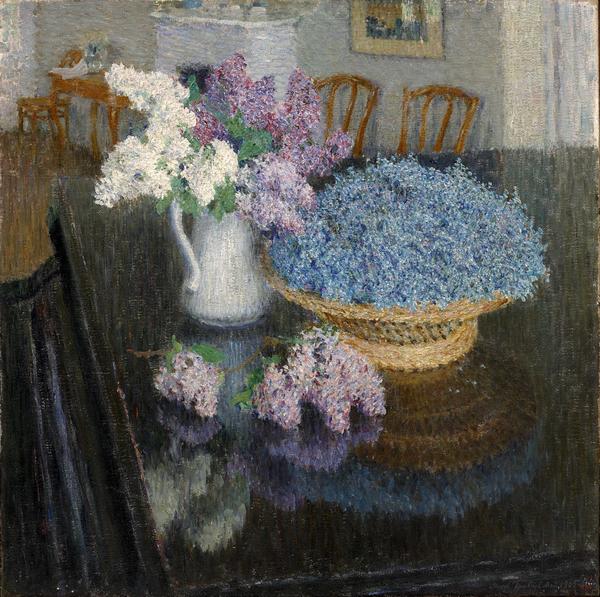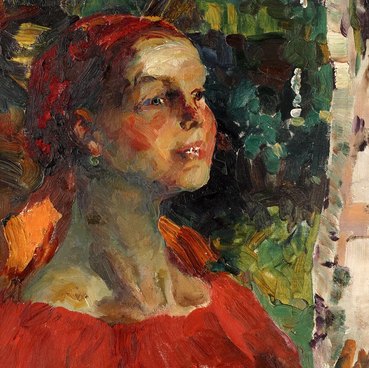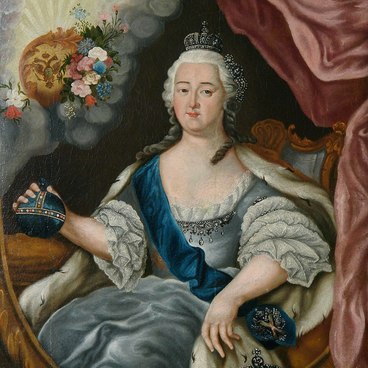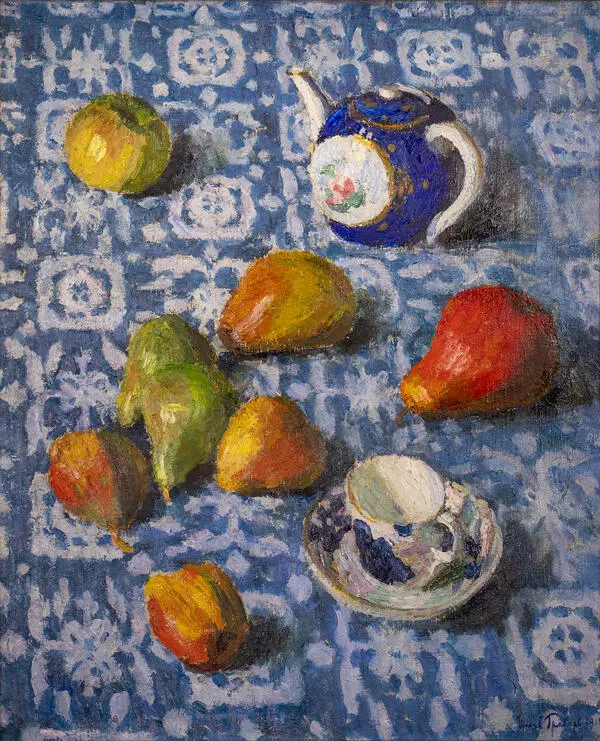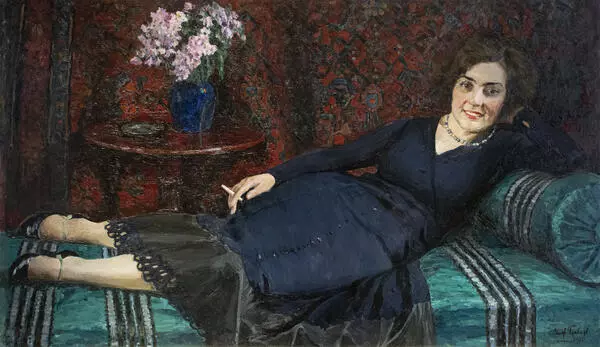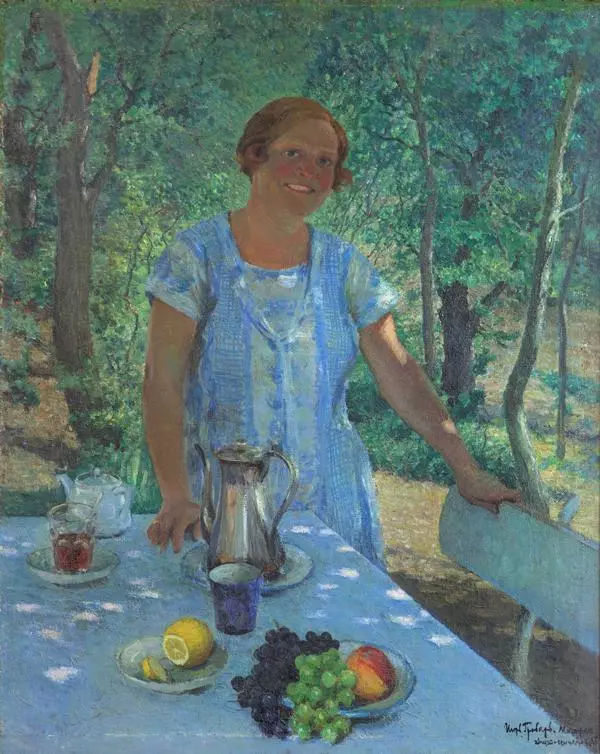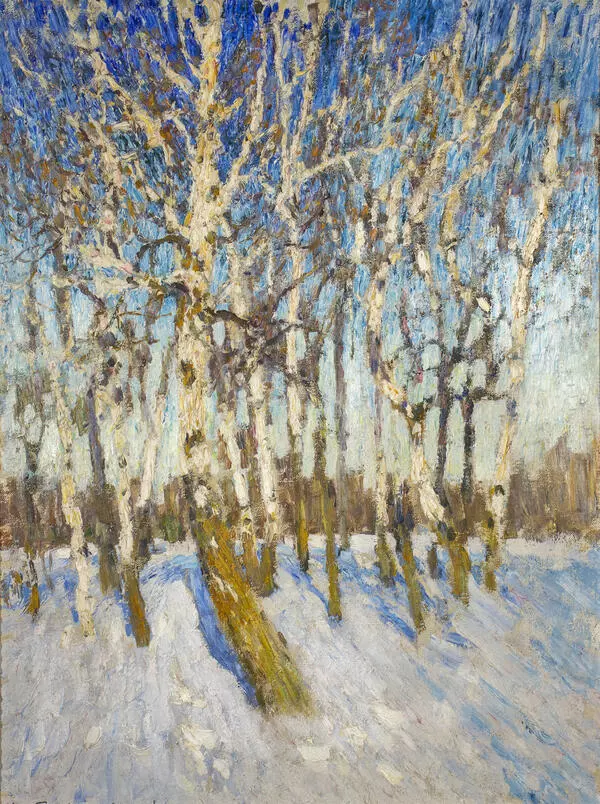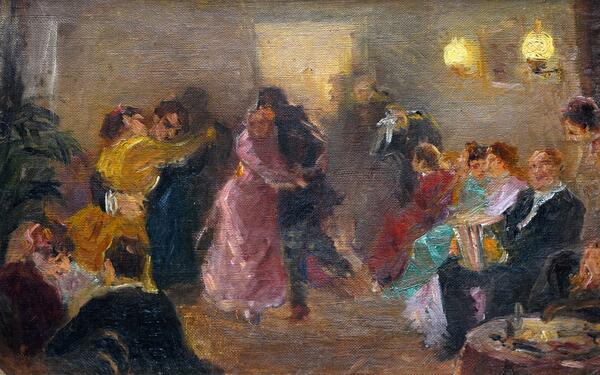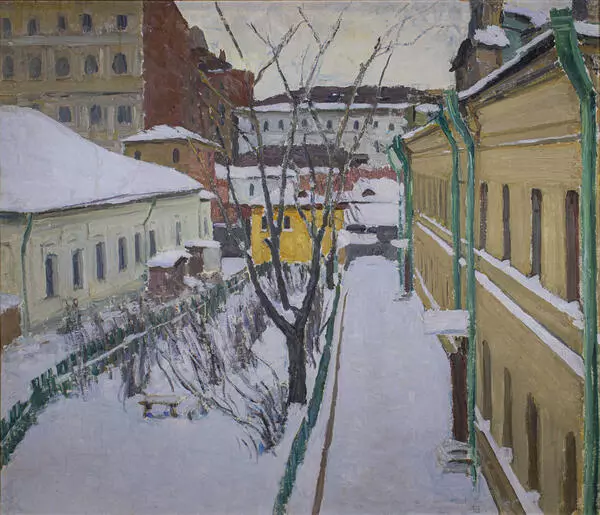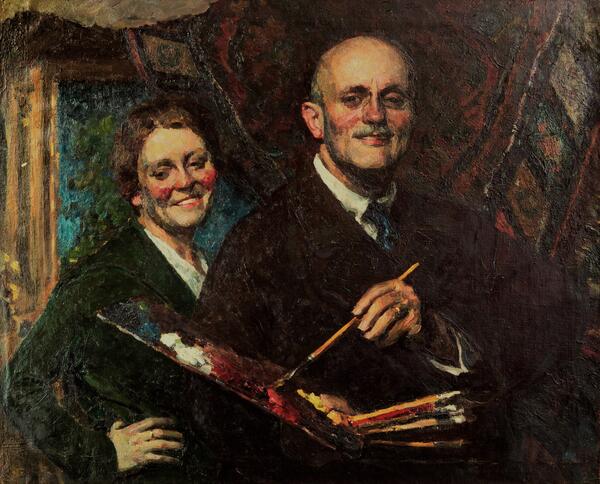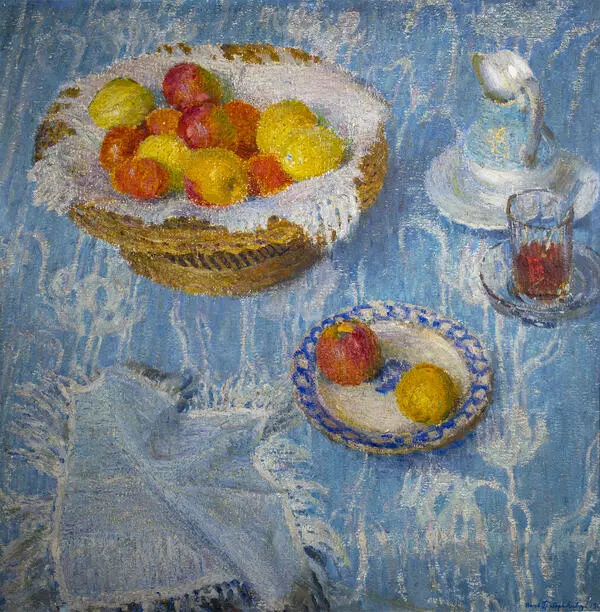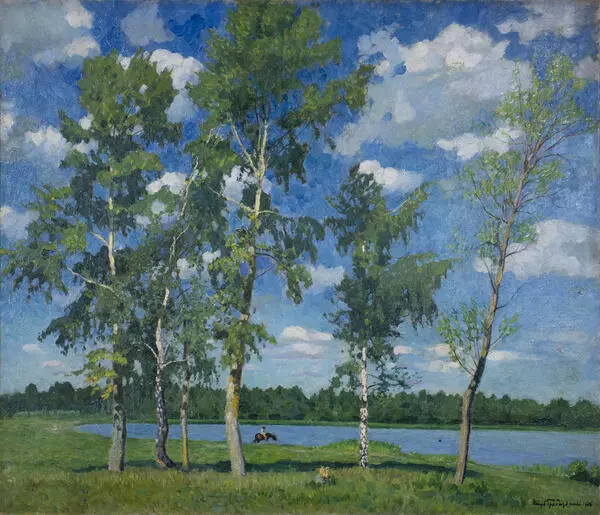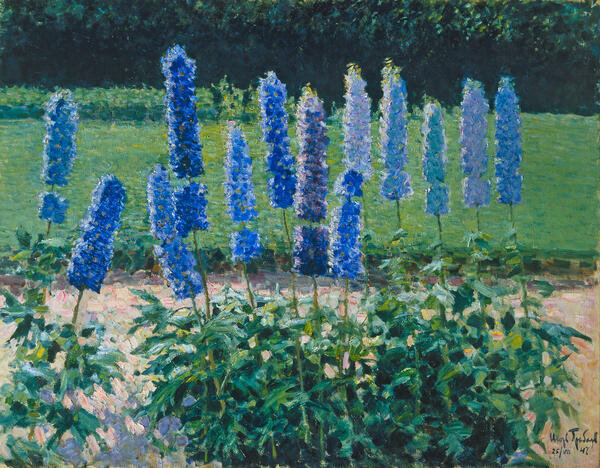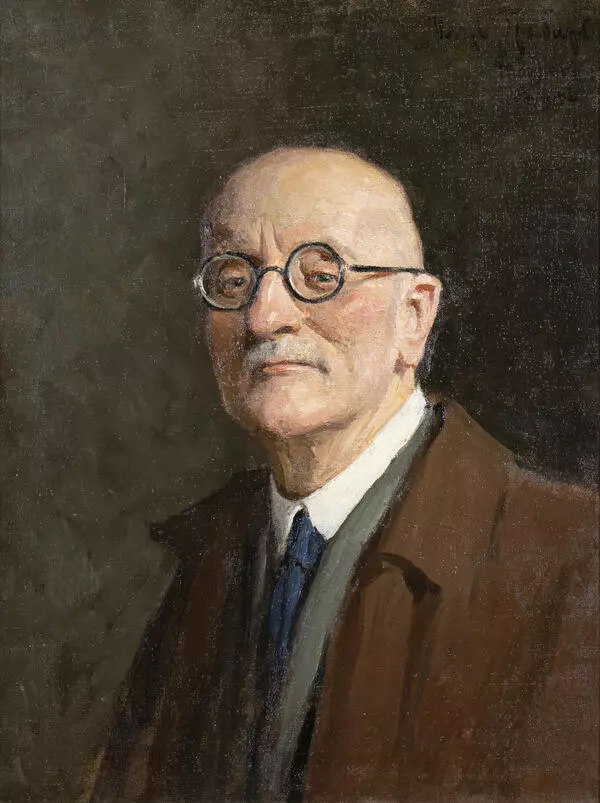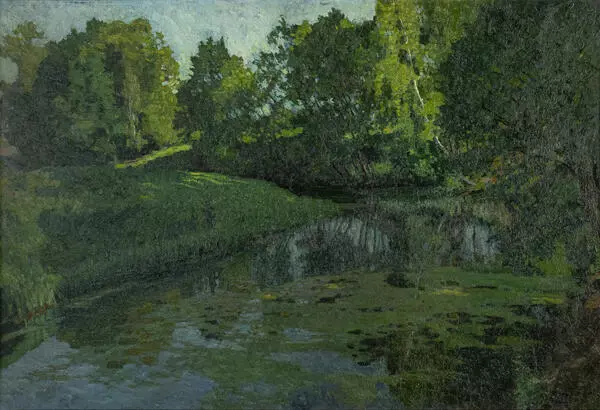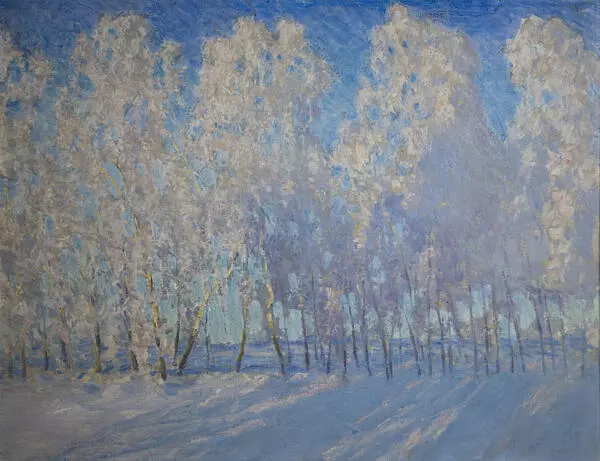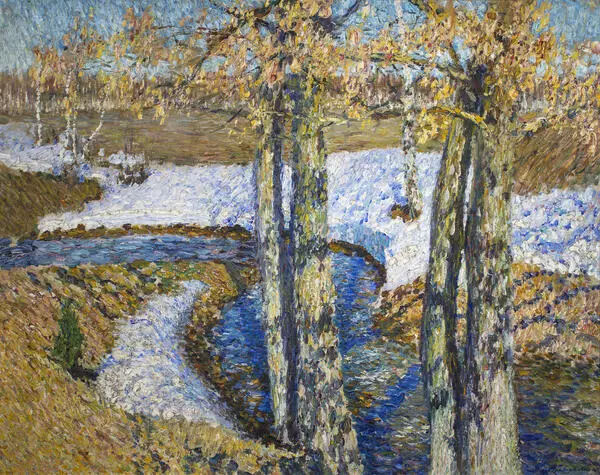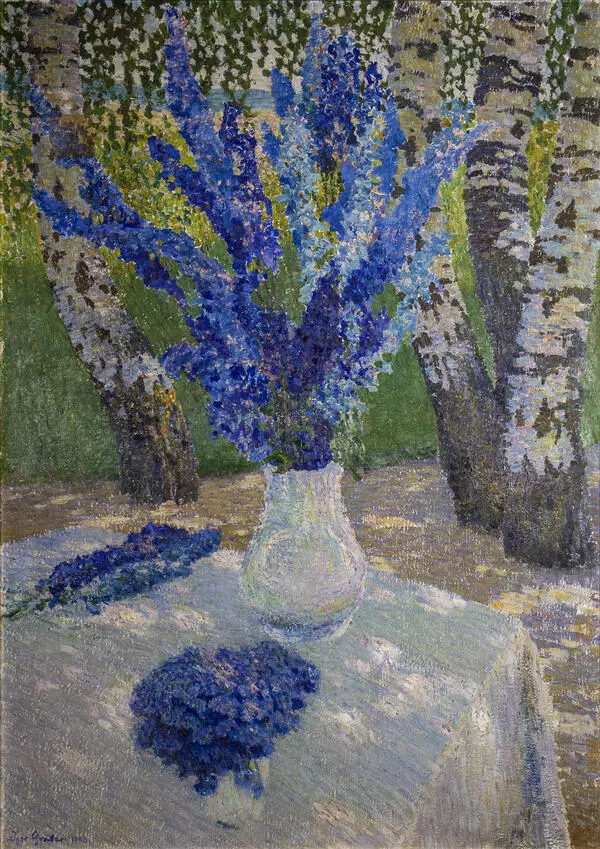Igor Grabar painted ‘Lilacs and Forget-Me-Nots’ in 1905. The painter had seen the composition in the Moscow estate of Dougino, while visiting his friend Nikolai Meshcherin. The artist created many pivotal works in those places, especially winter landscapes and floral still life paintings.
The master described the preparation for this painting as follows: ‘I saw a basket on the piano, this time it was round. It was densely filled with forget-me-nots that resembled some plush fabric of a marvelous turquoise colour. There was a bouquet of white and purple lilacs in a white jug next to it. I threw another branch of lilac near the piano and started painting.’
Igor Grabar rendered the flowers with dotted strokes that made the convex lilac inflorescences and the forget-me-nots seem tangible. The master painted the black smooth surface of the piano and the interior around it with ‘downward’ brush movements. Igor Grabar always wanted the texture of strokes to convey the ‘feeling’ of objects as well as light and colour effects. For this reason, he used different techniques for different paintings.
Natalia Mamontova, the artist’s biographer, wrote that Grabar’s still-life paintings of that period ‘embodied “full-blooded” impressionism’. That way the master tried to convey his impressions of the moment at a particular time of day. He sought to reproduce the light and air exactly as he saw them. He did not mix the colors on the palette to get the right shade, but immediately applied solid colors to the canvas.
A few years after the still-life was painted, is made its way to the Russian Museum. According to the contemporaries, the picture immediately became popular. It was difficult to squeeze close to it: visitors were constantly crowding around the painting and fellow artists often reproduced the masterpiece. Even before the 1917 revolution, a colored postcard featuring the painting was issued.
Actually, Igor Grabar was not happy with this work. Having finished the picture, he considered ‘Lilac and Forget-Me-Nots’ too ‘photographic’. He had, by far, preferred his still-life ‘Flowers and Fruit on the Piano’, which made its way to the Yaroslavl Museum from the outset. In 1925, the artist ordered the paintings to be exchanged. This was the way the-so-popular still-life ‘Lilacs and Forget-Me-Not’ ended up in Yaroslavl, and ‘Flowers and Fruits’ settled in the Russian Museum.
The master described the preparation for this painting as follows: ‘I saw a basket on the piano, this time it was round. It was densely filled with forget-me-nots that resembled some plush fabric of a marvelous turquoise colour. There was a bouquet of white and purple lilacs in a white jug next to it. I threw another branch of lilac near the piano and started painting.’
Igor Grabar rendered the flowers with dotted strokes that made the convex lilac inflorescences and the forget-me-nots seem tangible. The master painted the black smooth surface of the piano and the interior around it with ‘downward’ brush movements. Igor Grabar always wanted the texture of strokes to convey the ‘feeling’ of objects as well as light and colour effects. For this reason, he used different techniques for different paintings.
Natalia Mamontova, the artist’s biographer, wrote that Grabar’s still-life paintings of that period ‘embodied “full-blooded” impressionism’. That way the master tried to convey his impressions of the moment at a particular time of day. He sought to reproduce the light and air exactly as he saw them. He did not mix the colors on the palette to get the right shade, but immediately applied solid colors to the canvas.
A few years after the still-life was painted, is made its way to the Russian Museum. According to the contemporaries, the picture immediately became popular. It was difficult to squeeze close to it: visitors were constantly crowding around the painting and fellow artists often reproduced the masterpiece. Even before the 1917 revolution, a colored postcard featuring the painting was issued.
Actually, Igor Grabar was not happy with this work. Having finished the picture, he considered ‘Lilac and Forget-Me-Nots’ too ‘photographic’. He had, by far, preferred his still-life ‘Flowers and Fruit on the Piano’, which made its way to the Yaroslavl Museum from the outset. In 1925, the artist ordered the paintings to be exchanged. This was the way the-so-popular still-life ‘Lilacs and Forget-Me-Not’ ended up in Yaroslavl, and ‘Flowers and Fruits’ settled in the Russian Museum.

